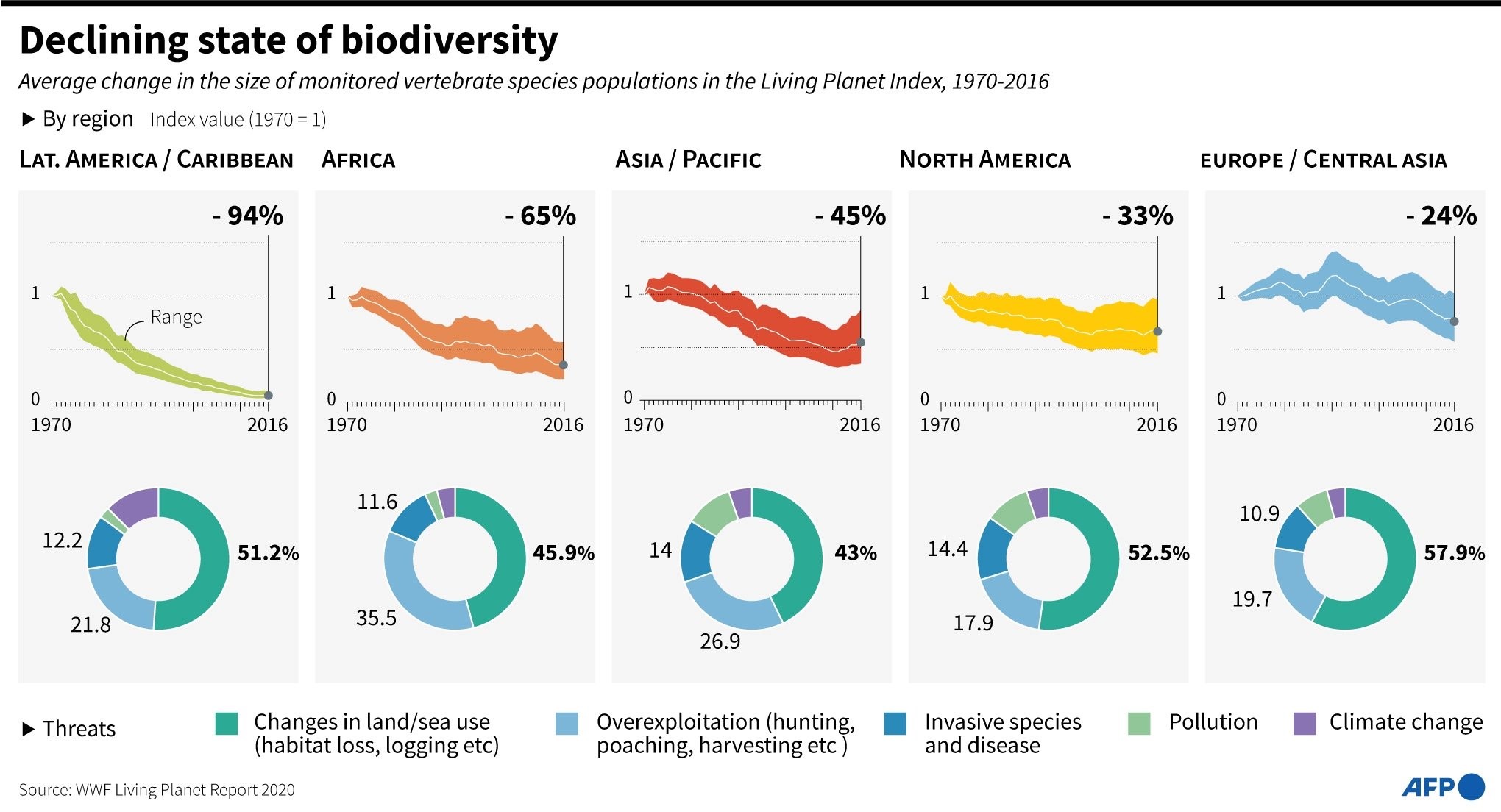PREVIOUS
Living planet report 2020
September 16 , 2020
1531 days
1144
0
- It is Published by World Wildlife Fund (WWF) and Zoological Society of London.
- It has found that there has been a reduction of 68 % in the global wildlife population between 1970 and 2016.
Key Findings
- 75 % of the Earth’s ice-free land surface has already been significantly altered, most of the oceans are polluted.
- More than 85% of the area of wetlands has been lost during this period.
- The highest biodiversity loss due to land use change globally has been found in Europe and Central Asia at 57.9 %, then in North America at 52.5 %, Latin America and Caribbean at 51.2 %, Africa at 45.9 % and then Asia at 43 %.
- The largest wildlife population loss, has been in Latin America at an alarming 94 %.
- India, a “megadiverse country” with over 45,000 species of plants in only 2.4 % of the world’s land area, has already lost six plant species to extinction.
- India has lost 12 per cent of its wild mammals, 19 per cent amphibians and 3 per cent birds over last five decades.
- Vertebrate population has been declining at a rate of about 60 per cent in India.

Leave a Reply
Your Comment is awaiting moderation.


